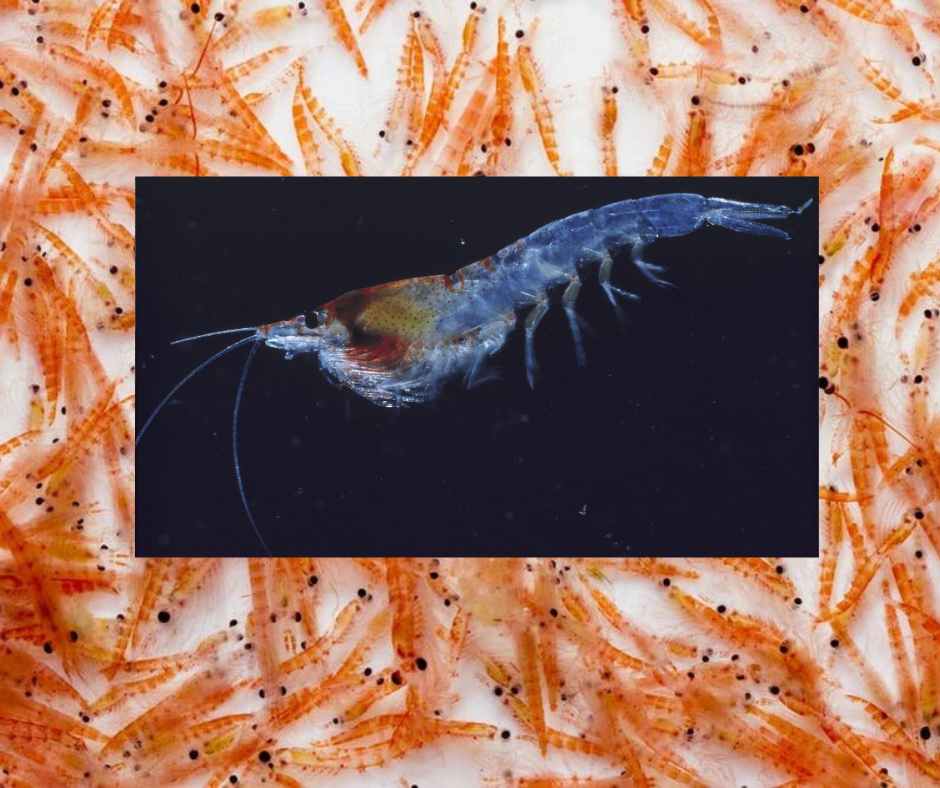Why Protecting Krill is so Important to Our Survival

The vast oceans hold a treasure trove of life, from majestic whales to graceful dolphins. However, there is a small creature that often goes unnoticed but plays a pivotal role in sustaining the marine ecosystem - the krill. In this blog, we will dive deep into the world of krill, exploring what makes them so fascinating, why their protection is crucial, and the potential consequences of overharvesting these tiny crustaceans.
The Ecological Significance: Krill may be small, but their impact on the marine ecosystem is immense. As filter feeders, they consume copious amounts of phytoplankton and zooplankton, effectively becoming the cleanup crew of the oceans. This feeding behavior not only helps regulate the populations of these microscopic organisms but also channels energy through the food web. Krill serve as a vital link between primary producers and higher trophic levels, providing sustenance to numerous marine species, including whales, seals, penguins, and fish.

Climate Warriors: Beyond their role in the food web, krill also contribute to climate regulation. Through their feeding habits, they sequester carbon dioxide from the atmosphere and transport it to deeper waters, aiding in the ocean's biological carbon pump. By absorbing carbon-rich particles during their consumption of phytoplankton, krill play an essential part in mitigating climate change and maintaining the delicate balance of Earth's systems.
The Importance of Protection: Protecting krill populations is not merely an act of conservation; it is essential for the stability and resilience of marine ecosystems. Overharvesting krill can have far-reaching consequences, impacting not only the survival of these tiny crustaceans but also the intricate balance of life in the oceans.

Disrupting the Food Web: If krill populations decline due to overharvesting, the ripple effects throughout the food web can be catastrophic. Whales, seals, and penguins, which heavily rely on krill as a primary food source, may face food scarcity, leading to reduced reproduction rates and compromised overall health. The majority of blue whales in the Southern Ocean feed mainly on Antarctic krill for six months of the year, before migrating thousands of kilometres north to breed, during which time they do not feed. It has been estimated that a single blue whale can consume 3.6 million krill in one day! That's about 4 tons of the tiny crustaceans a day. That’s about the weight of a fully-grown hippopotamus. Moreover, fish populations that depend on krill for sustenance may decline, causing imbalances and potential collapse in commercial fisheries. As well as by Antarctic animals, krill are also eaten by humans. Due to its high abundance and nutritive qualities (they are rich in protein, vitamin A, and omega-3 fatty acids), krill are increasingly commercially harvested for human consumption. Though only a small percentage of this is for human consumption, the majority is utilised as aquaculture feed and bait, and livestock and pet food. Krill also have important medical uses, as their enzymes are used in various treatments.

Ecological Imbalance and Biodiversity Loss: The loss of krill can disrupt the entire ecosystem, leading to imbalances and reduced biodiversity. With fewer krill available, some predators may resort to preying on other species, causing population declines or the loss of vulnerable species that were previously less vulnerable.

Climate Change Amplification: Krill populations face additional threats from climate change. Rising ocean temperatures, melting sea ice, and changing ocean currents can disrupt their habitats, affecting their distribution and abundance. When combined with overharvesting, these stressors intensify the vulnerability of krill populations and exacerbate the challenges they face.
In the vast expanse of the oceans, the small and unassuming krill plays a vital role. From sustaining the food web to regulating the climate, these tiny crustaceans are crucial for the health and balance of marine ecosystems. Protecting krill populations and maintaining sustainable harvesting practices are not just ethical imperatives; they are essential for the survival of numerous marine species and the overall well-being of our planet. By protecting these remarkable creatures, we safeguard the health of marine ecosystems, preserve biodiversity, and uphold the delicate balance that sustains life beneath the waves. Let us recognize the crucial role of krill and work collectively to ensure their conservation for the well-being of the planet and future generations to come.



Share:
Beneath the Surface: The Hidden Risks of Diving and Strokes
Exciting Dive Adventures in Point Dume Marine Reserve